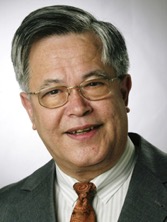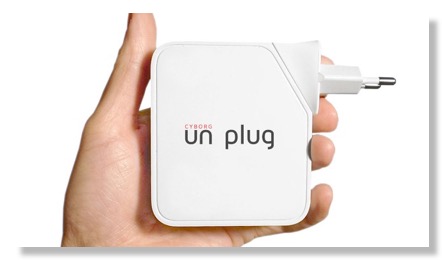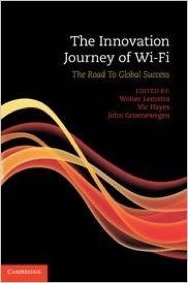Mobile operators to shift from "pure Wi-Fi" to unlicensed services tied to LTE, says report
[Reprinted with kind permission of PolicyTracker,
a London-based spectrum newsletter.]
The report, "Carrier Wi-Fi and LTE-U 2016," predicts a "decisive transition" from "pure Wi-Fi" to the tying of unlicensed services to LTE in various ways.
Mobile operators have historically invested in significant Wi-Fi networks, said analyst Kyung Mun in the report. Investment in unlicensed spectrum is likely to increase, but it will be redirected toward licensed assisted access (LAA), LTE Wi-Fi aggregation (LWA) and LTE WLAN radio level integration with IPsec tunnel (LWIP), he said.
Some of the new funding will be coupled to small cells, with multiple business models emerging as companies, carriers and over-the-top players look to capture end-users. "The competition for unlicensed spectrum use via Wi-Fi or LTE-U is a reflection of the competitive dynamics of the different types of operators," Mun said.
Around 80 per cent of mobile data is carried over Wi-Fi today, but that figure will rise to at least 90 per cent by 2020, said Mobile Experts analyst Joe Madden. Unlicensed data traffic tied to LTE control channels "will greatly improve on ease of use, and will be far more reliable than Wi-Fi services," he said. Operators will invest because hybrid combinations of LTE and unlicensed wireless can be as low-cost as Wi-Fi and as dependable as LTE.
"We believe many mobile operators are motivated to more effectively leverage the unlicensed spectrum via LWA/LWIP or LTE-U/LAA technologies, and the use will be driven by availability or handsets that can take advantage of these technologies as well as necessary infrastructure investment," Mun told us. Handsets that can take advantage of these features "will come to market in 2017 based on our supply check".
"Pure" unlicensed spectrum better?
The report asserts that most data being carried over unlicensed spectrum by 2020 will do so via a tie-in to LTE and sharing of licensed bands, said Simon Forge, director of consultancy SCF Associates. But the more likely scenarios "may be a preference for pure unlicensed spectrum, not anchored with a licensed band for aggregation," he told PolicyTracker.
That has more attractive business advantages for new entrants, and there are lots of protocols under consideration, such as MuLTEfire from Qualcomm with use of LTE packet protocols. "The interesting protocol area may be further developments in Wi-Fi with new open standards," Forge said.
But the key point is that there is pressure for the extension of unlicensed swathes of spectrum through the adoption of new licence-exempt bands, most usefully in the sub-1 GHz range. The question facing the "world's billions" is how soon that could happen: "Possibly not too soon but probably before 2030," Forge said.
Compatibility issues unresolved
The report appears to say that transition to aggregations of Wi-Fi and LTE-based unlicensed services is a "done deal," said SCF Associates senior consultant Robert Horvitz. "But the compatibility tests between Wi-Fi and the various LTE variants haven't even started," he told us. Nor has there been any discussion of the practical need for a licensed anchor to manage unlicensed bandwidth. "If there's really no technical need for that - and I believe that's the case - then it's just an excuse for cellcos to claim the right to bill users for free bandwidth," he said.
Mun said compatibility tests between Wi-Fi and LTE-U had been going on for some time with various constituents, and to varying degrees in lab and field tests. The Wi-Fi Alliance is working on a draft Wi-Fi/LTE-U coexistence test plan, an effort which has been delayed several times and which is now expected to be completed in September, he said.
Meanwhile, some mobile operators and vendors are carrying out field trials while they await regulatory approval, Mun said. For the mobile operators, with licensed spectrum, the licensed anchor "provides a reliable 'control mechanism' of sorts," he told us. By conducting all control signalling via the licensed anchor, they can manage quality of service better and can use the unlicensed spectrum as a supplemental downlink when needed.
What's really needed is "close cooperation between 3GPP, IEEE and regulators to develop a consensus on rules for hybrid band sharing and aggregation (fixed/mobile converged networks that combine licensed and licence exempt band use)," said Horvitz. And if not rules, he added, then there should at least be principles concerning technical and coexistence fairness issues.•
© PT Publishing 2016
Vic Hayes, Founding Chair of 802.11, Inducted into Consumer Electronics Hall of Fall for Wi-Fi Development

The CEA magazine i3 ("It is Innovation") published a long bio of Vic and discussion of his work that is here.
There is something really unlikely about the whole early history of Wi-Fi. Vic worked for NCR, the company once called National Cash Register because that was their main product. Except for a brief foray into PC production, NCR was never in the consumer products business and was a classic B2B firm. (It is interesting that today's NCR has no interest in discussing its role in Wi-Fi and even blocked placing a plaque commemorating Wi-Fi development in one of its buildings in Holland!)
But an interest in the 1980s to sell PC-based cash registers in department stores that could be interfaced to store main frame computers focused NCR's attention on networking. Wired Ethernet was not a practical solution in such stores due to cement floors and frequent rearrangements of counters. Thus in 1987 a search began for a wireless alternative. The group involved, located in NCR's Utrecht Holland lab quickly noticed the possibility of the May 1985 FCC spread spectrum/ISM band decision as a home for such networking.
Vic was then the founding chair of the IEEE 802.11 committee that started with a handful of members and went on to develop the ubiquitous 802.11 standards that we expect everywhere we go. Vic coauthored a book on how this all came about and I strong recommend it.
Congratulations to Vic on this well deserved honor!
Commissioners Rosenworcel & O'Rielly Remarks on Techonomy Spectrum Panels
Beginning of Wi-Fi Privacy-Related Electronic Warfare
In a previous post we wrote about the jamming threat to Wi-Fi and cellular that may come from unrestricted access by private drones to their spectrum. Today, a CNN post provocatively entitled “This gadget can knock drones and Google Glass offline” describes a device called the “Cyborg Unplug”. Its maker describes it as
Cyborg Unplug is a wireless anti-surveillance system for the home and workplace. 'Plug to Unplug', it detects and kicks devices known to pose a risk to personal privacy from your local wireless network, breaking uploads and streams. Detected devices currently include: Google Glass, Dropcam, small drones/copters, wireless 'spy' microphones and various other network-dependent surveillance devices.
Cyborg Unplug comes hot on the heels of glasshole.sh, a script written by Julian Oliver to detect and disconnect Google's Glass device from a locally owned and administered network. Following broad coverage in the press, the script struck a chord with countless people all over the world that felt either frustrated or threatened by the growing use and abuse of covert, camera-enabled computer technology.
Whether business office, restaurant, school or nightclub: it's your territory and your rules, so make it harder for those that seek to abuse it.
The maker describes the 2 modes of the device:
Cyborg Unplug can be operated in two modes. The recommended mode is Territory Mode, disconnecting target devices from selected network(s) owned and operated by the user. The other mode is All Out Mode, which disconnects all detected target devices from any network they are associated with, including paired connections with smartphones. Please note that this latter mode may not be legal within your jurisdiction. We take no responsibility for the trouble you get yourself into if you choose to deploy your Cyborg Unplug in this mode.
We will not parse here US rules and regulations about whether this is illegal. Nor will we speculate on whether it will actually work as advertised. This new product and its website and PR campaign shows the pent up demand for privacy protecting devices. If this device becomes popular, explicitly illegal Wi-Fi jammer manufacturers probably will go after the same market and a whole cycle of electronic warfare will begin.
The Wi-Fi industry and cellular industry should do some soul searching about whether their nonchalant attitude towards privacy invading uses of their technology contributes to supply and demand issues for jammer-like devices. Your blogger was once involved in electronic warfare issues decades ago. He does not want these to come to the dynamic civil communications systems that contribute so much to our society and economy.
Once Pandora’s Box is fully open, large NALs to mysterious Chinese companies will really have no impact.
Leaders of the Wi-Fi and cellular industries: Are there actions your industries are taking or trends which you are ignoring that are stimulating the demand for jammers? Will addressing these issue within your industries be more effective than relying on the currently underfunded FCC to solve severe problems that are likely beyond its resources if they take hold?
Field of Dreams & Spectrum Policy
This week, the 80th anniversary of the Communications Act of 1934, is also the 25th anniversary of “Field of Dreams”, the movie most remembered for the line “If you build it … they will come”. While I recall that President Bush (41) publicly said he was confused about the movie, President Bush (43) actually was a great fan.
The connection to spectrum policy? Classic FCC spectrum policy (along with spectrum policy in other places) was prescriptive - that is users could do A and B, but not C if C was not explicitly allowed. Thus when I joined FCC in 1979, land mobile (Part 90) users were allowed AM and FM modulation and it took a long series of rule makings, some of which inconsistent in their final technical details details, to allow digital modulation for all users. By contrast, today’s rules are generally (broadcasting and public safety being major exceptions) proscriptive in that they tell you what you may not do - generally things that would result in interference to other users.
The reason why the 1981-85 rulemaking that brought forth Wi-Fi, Bluetooth, ZigBee and many other less known products was so controversial that it resulted in an attempt to fire your blogger after the rules were adopted was that it was an earlier action to move away from this prescriptive model. The rules adopted in Docket 81-413, now updated and codified as 15.247, did not say “let there be Wi-Fi”, they said “here is this spectrum, here are rules that prevent harm to anyone else, feel free to innovate and offer new products to the public and let’s see where this goes! “ (In truth, in 1985 wired/Ethernet LANs were nonexistent in offices and homes and there are no interest in any type of wireless LAN as a product for serial production. But the flexibility grand in the Docket 81-413 R&O meant that when interest developed for RLANs within a few years those interested did not have to come to FCC and grovel for permission for years. Thus they had timely market access and history was made!)
So as we near the 1 year anniversary of the IEEE-USA petition for FCC on the spectrum above 95 GHz that now lacks any rules (and is hence implicitly forbidden for normal licensed or unlicensed use) today let us ponder what we gain by having no such rules or even a defined path to such rules. In the Docket 81-413 rulemaking most commenters were opposed saying the technology under discussion was “blue sky” and had no demand. Yet within 2 years commercial products were available. A few years later came Wi-Fi and Bluetooth -- now “applications that have changed our world”.
Let us ponder of the lessons of “If you build it … they will come” and also the spectrum policy variant: “If you allow it .. they may well build it”. Let’s see if we can convert most FCC spectrum rules from prescriptive to proscriptive structure. (The cellular rules generally have this approach already.)
ABC US News | ABC Celebrity News
Mac@30
Today is the 30th anniversary of the introduction of the Apple Macintosh. It may not come as surprise to many readers of this blog that your blogger has been a Mac user from the very beginning. We decided to buy a Mac when they first came out 30 years ago, but could not actually get one until March 17. That day was St. Patrick’s Day as well as the start of Purim in the evening. To see if the new computer and printer were as easy to use as they promised, we set them up and tried to design and print place cards for people who were coming to dinner at our house that night. For the unusual confluence of holidays we designed the cards with each person’s name and a shamrock and a 3-cornered hat (associated with the evil Haman in the Book of Esther). Amazingly we finished the set up, design, and printing in about an hour and proceeded with the rest of the dinner preparation - the original Mac was that easy!
In the Vic Hayes presentation in previous post and the 2011 Steve Jobs memorial post we document how Apple played a key role in making Wi-Fi a ubiquitous service, more than the radio LAN for cash registers that was an original goal. Thus the Apple design philosophy of easily approachable technology also has had a key impact on the wireless industry - resulting in the cellular industry’s love/hate relationship with unlicensed spectrum and their codependency with it.
Below is a link to NPR’s excellent discussion today of the anniversary and interviews with members of the original team.
Vic Hayes, Founding Chair of 802.11, Receives "Lovie" Lifetime Acievement Award

The Lovie awards, named after Ada Lovelace, the legendary first software writer, are not well known in the US. They “recognise the unique and resonant nature of the European internet community – from Europe’s top web and creative networks and content publishers to cultural and political organisations and bedroom bloggers.” The citation for Vic says
His work helped to usher in the age of the ubiquitous Internet, providing users with Ethernet-free connections and a brand new sense of connected mobility. That freedom led to countless innovations in hardware and software that have set the standard for the modern Internet age.
Congratulations to Vic on this wonderful recognition! I was honored that he chose this occasion to mention my role also in his discussion of the origins of Wi-Fi. See the video below at 2:30
Google's Balloon-based Wi-Fi for Rural Areas & Emergencies

In the past few days Google’s Project Loon has been revealed. As one who was a early pioneer in this area, your blogger was excited about this unexpected use of Wi-Fi which in itself was an unexpected application of the unlicensed ISM bands when the rules for them were adopted in 1985.
While much is made now about the ability of unlicensed spectrum to foster innovation, the key to the success of the ISM bands and the comparative failure of the contemporary U-NII and U-PCS bands is the great technical flexibility the rules for the ISM bands had to implement unimagined applications, not just what the proponents of the bands wanted at that time. Unlicensed by itself does not lead to technical innovation. The synergy of unlicensed and flexible technical rules that allow innovators to innovate at Internet speed” not “government speed” is what enables innovation. Several of the recent proposals for new unlicensed spectrum have so many strings attached that one wonders if they will really enable innovation as the ISM bands have.
Kudos to Google for this fascinating innovation of balloon-based Wi-Fi for emergency and rural use. It shows that the combination of unlicensed and truly flexible rules can supply the spectrum needed for disruptive innovation - perhaps the reason why the mainstream spectrum holders and their suppliers in the 1980s were dead set against the original ISM band rules and were happy to see your blogger sent off to “internal exile” in FCC for several years after the original ISM band decision.





![Validate my RSS feed [Valid RSS]](valid-rss-rogers.png)

